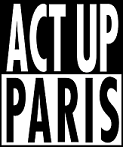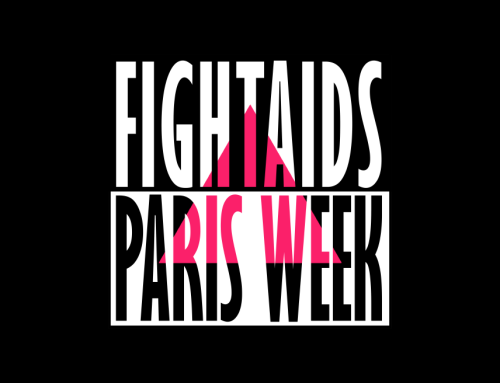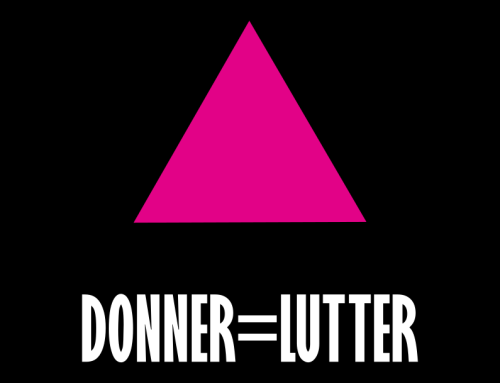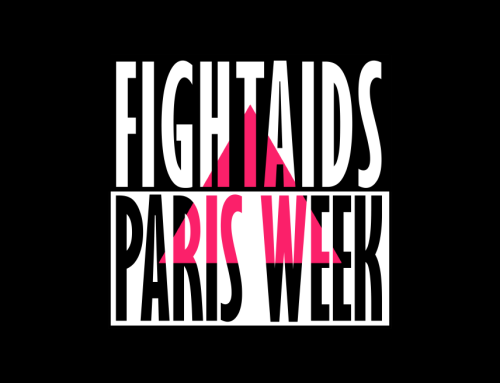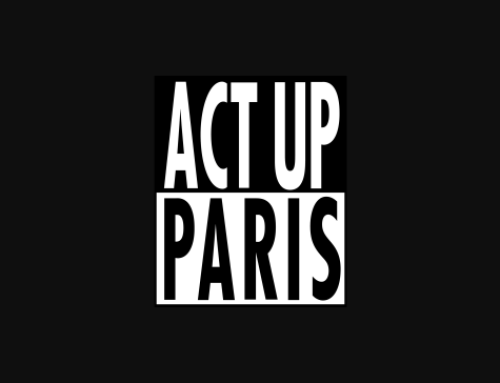On November 14, 2001, the World Trade Organization’s ministerial conference in Doha, Qatar, agreed on a deal for access to medicines : the « Doha Declaration on TRIPS and Public Health »[[ www.wto.org/english/thewto_e/minist_e/min01_e/mindecl_trips_e.htm ]]. According to this deal, developing countries would henceforward be allowed to bypass drug patent monopolies that stop the flow of cheap generic medicines from countries like India into regions like Africa.
Five years later, according to data published by the World Health Organization, 74% of AIDS medicines are still under monopoly[[ www.who.int/hiv/amds/patents_registration/drs/ and www.actupparis.org/article2778.html ]] and 77% of Africans still have no access to AIDS treatment[[ www.who.int/hiv/toronto2006/FS_Treatment_en.pdf ]]. In the Philippines, in Indonesia, in Niger, in Botswana or in Haiti, not a single generic version of antiretrovirals is available[[<3>]] in 2006, even though these countries have 8 different anti-HIV molecules on the market: all of these drugs are patented versions that the poor can’t afford. This situation flies in the face of article 5 (b) of the 2001 Doha Declaration, which affirmed that « Each Member State of the WTO has the right to grant compulsory licenses and the freedom to determine the grounds upon which such licenses are granted ». In contrast with a voluntary license, which can only be granted voluntarily by the patent owner, a compulsory license can be granted by the government, without the consent of the patent owner. However, in practice actual use of this procedure since 2001 has been extremely rare. « Use of the Doha Declaration provision is almost impossible in practice, because of the political pressure exerted by the Bush administration » reveals Dr Pedro Chequer[[Pedro Chequer, chequerp@unaids.org, +54 11 4314 2376 ; see press kit.]], who until recently was the Director of the National AIDS Program of Brazil. « That’s exactly what happened to Brazil last year, when we tried to use compulsory licensing ». « At Cipla, so far we have been able to make generic versions of the HIV medicines that were invented before the WTO and the subsequent globalization of patent s» explains Dr Yusuf Hamied, CEO of Cipla[[Yusuf Hamied, corporate@cipla.com ; see our pdf document available in this page.]]. « However, if the Doha Declaration remains unused, generic manufacturers like us will be unable to make affordable versions of the latest HIV innovations — for instance the very promising integrase inhibitors- because such recent medicines are now globally patented ». At the Gleneagles summitin 2005, the leaders of the G8 countries committed to reaching universal access to AIDS treatment by 2010. Their first order of business to reach their new goal should be to remove all blockages to the flow of affordable medicines in developing countries. Act Up-Paris calls on G8 leaders to declare the WTO agreement on intellectual property no longer applicable to essential health products in developing countries.Reference documents :
– 1. Raw WHO table on list of ARVs registered in every country ; – 2. Analysis of WHO table showing, per country, number of ARVs available, number of ARVs under competition/monopole, and percentage thereof ; – 3. Definitions and methodology for analysis of the WHO table ; – 4. Press release by Indian generic ARV maker Cipla on 5th anniversary of Doha Declaration. These documents are available here.Contents of the press kit :
Patents and access to medications: a primer
1. What is a patent ? A patent is a property title pertaining to an invention, as opposed to a piece of land or shares in a company. It falls under the category of “ intellectual property titles ” (like copyrights for songs, or trademarks for brands). Just as a foreign government cannot issue a property title for a piece if land in your country, your government cannot issue an intellectual property title that would be enforced in a foreign country. If you want to enforce your intellectually property title in a foreign country, you have to obtain the title from the local government there. 2. How does a patent work ? A patent gives the holder a monopoly on both production and sales of the invention. The holder of a patent can thus prosecute any person or company that produces or sells an invention without the holder’s consent. In the case of successful prosecution, the offending party will be forced to repay the patent holder for any commercial damages that are sustained. Patents are meant to prevent competition. The justification is that, without a monopoly on the exploitation of the invention, there is no commercial incentive for inventors to put effort into developing useful inventions. By protecting companies from competition, patents allow them to set the highest price possible for the product – thereby making the highest profit possible. This is a strong incentive for companies to invest in research and development. Thus, monopoly holders are allowed to withhold good (e.g., medications) from the market, in the hope of gaining a higher profit. 3. What problems do patents pose for access to medications ? Patents are meant to ensure high prices, in particular prices that have nothing to do with the cost of production (the cost of making one more unit of the good). For example, the drug lamivudine (the most common HIV medication today) costs less than 43 euros to make (cost of a year’s worth of treatment, as a generic), but the patented version is sold by Glaxo-SmithKline for 1 730 euros, excluding taxes (annual price in France). In France, a typical HIV cocktail (lamivudine + tenofovir + efavirenz) costs 8 500 euros a year. France, however, has a social welfare mechanism which covers HIV treatment 100 %, ensuring that the exorbitant price of antiretrovirals does not stop those infected with HIV from gaining access to treatment. In developing countries, these social welfare mechanisms do not exist, and even if such mechanisms were in place, these countries simply do not have the means to afford such high prices. In Malawi, for example, 10 % of the total population is HIV positive, while per capita income is under 400 euros : the country’s whole GDP wouldn’t suffice to pay for 8 500 euros treatment. At such elevated prices and without medical insurance, only a very small minority of the population of poor countries can buy the drugs, to the extent that Western pharmaceutical companies make a very small part of their total sales in developing countries. In poor countries, every euro added to the price of antiretroviral therapy prevents another slice of the infected population from accessing treatment. In countries where lamivudine is not patented (for example India), the price of generic lamivudine has been reduced by half since 2001 (from 80 to 43 euros), as a result of price competition between manufacturers. Many more Indians are able to afford this product now (though many still cannot afford 43 euros). In developing countries, generic competition is thus essential so that access to necessary medications might be guaranteed to the greatest possible number of people living with HIV. 4. What is a compulsory license ? A license permits a person other than the patent holder to produce or sell the patented invention in exchange for the payment of a royalty to the holder (usually a percentage of the price of the product). A compulsory license, as opposed to a “ voluntary ” license (which is granted voluntarily by the patent holder), is a legal instrument which allows the government of a country to grant a license without the consent of the patent holder. However, the beneficiary of a compulsory license is also required to pay a royalty to the patent holder. 5. What is TRIPs ? TRIPs is the agreement on Trade-Related Aspects of Intellectual Property Rights. It is one of the WTO agreements which the world signed in 1994 (other agreements related, for example, to trade in agricultural goods, in manufactured products, in services, etc.). Article 31 of TRIPs defines the rules that WTO Member States are obliged to follow in order to use compulsory licensing to lift a patent. 6. What is the Doha Declaration on TRIPs and Public Health ? The Doha Declaration is a WTO ministerial declaration (the highest possible level of decision making within the WTO) which touches on intellectual property and access to health products. The declaration came after the international community admitted that the price of patented antiretrovirals in developing countries eliminated all possibility of care for those infected with HIV. The Declaration also responded to the rejection by public international opinion of the notion that patents should stop the millions of people dying of AIDS in Africa from accessing affordable generic drugs from India. Article 4 of the Doha Declaration affirms the preeminence of health concerns over purely commercial concerns ( “ …we affirm that the Agreement (TRIPs) can and should be interpreted and implemented in a manner supportive of WTO Members’ right to public health and, in particular, to promote access to medicines for all ”). Article 5 of the Doha Declaration serves as a reminder that Member States have the authority to use compulsory licenses (“ Each Member has the right to grant compulsory licences and the freedom to determine the grounds upon which such licences are granted ”). The Doha Declaration thus clearly invited developing countries to use compulsory licenses when they deem it necessary in order to lower the price of medications.Five years after Doha : 75 % of HIV drugs still under monopoly
The WTO’s Doha Declaration on pharmaceutical patents, signed in 2001, was supposed to eliminate the monopolies that impede the manufacturing and flow of generic medications, particularly HIV medicines, in developing countries. Five years later, almost 75 % of antiretrovirals in developing countries are still under monopoly. The World Health Organization (WHO) has recently published a database of which HIV medicines (patented or generic) are available in each of developing country[[The details of the methods used to analyze the WHO database (www.who.int/hiv/amds/patents_registration/drs/) are available at the Act Up website, www.actupparis.org/article2778.html.]]. From this database, one can see the number of antiretrovirals that are exposed to competition, and those that are under a monopoly, in each country. Act Up Paris conducted an analysis of these WHO statistics in October 2006[[<6>]]. For example, in Niger, the WHO counts eight different antiretroviral therapies. Out of these eight, not one is available in generic form, though less expensive, reliable generic versions exist for seven of the eight. The poorest amongst those infected with AIDS in Niger are thus deprived of access to treatment, and Niger’s pharmaceutical bill pointlessly depletes the country’s currency reserves. WHO statistics reveal that the situation in Niger is far from isolated :| Countries | Number of available ARV’s[[<6>]] | Number of ARV’s sold competitively[[An ARV is deemed to be sold competitively if at least one generic version of it is available in the country. See website for description of analysis methodology, www.actupparis.org/article2778.html.]] | Ratio | Index of competition |
| Bostwana | 12 | 0 | 0/12 | 0 % |
| Pakistan | 10 | 0 | 0/10 | 0 % |
| Rwanda | 7 | 0 | 0/7 | 0% |
| Togo | 11 | 4 | 4/11 | 36% |
| Vietnam | 10 | 1 | 1/10 | 10% |
Patents and access to medicines : What any G8 leader can do
1. Convene an international conference for the issuance of compulsory licenses A. Problems to solve – The United States continues to put pressure on developing countries to prevent them from accessing generic versions of drugs are still under patent, and from implementing the 2001 WTO deal on access to medicines. This pressure is enacted through non-public verbal statements by American officials, and through the publication of bilateral trade agreements with developing countries that contain clauses that block the application of the Doha Declaration articles on compulsory licensing. – Faced with this US pressure, no developing country wishes to be the first to “ call Washington’s bluff ”, because of the potential reprisals incurred for subjecting a patent to compulsory licensing (CL). It is important to distinguish between countries that issue a CL for importation (which tends to aggregate global demand, lower the prices and reinforces Indian generic manufacturers) and countries that issue a license for local production (which is technically accessible only to a negligible amount of countries, which atomizes global demand, and prevents any global economies of scale). Patent-based drug companies are much more strongly opposed to importation/exportation than to local production. – A “ chicken and egg ” conundrum is at play between the generic producers and the developing countries. On the one hand, the generic manufacturers do not want to invest in the development of generic versions of patented products before knowing that there is a market for these products – meaning not before developing countries have lifted the patent monopolies on these drugs. On the other hand, no developing country government wants to take the step of issuing a compulsory license to import a generic if the product is not readily available yet (but the development of a quality generic version from scratch to market takes between 18 and 36 months). – No developing country represents a market that would, on its own, justify the investment into a new generic. In order for generics to break even, they need big volumes and broad markets, extending over a large number of countries. This is why the issuing of an CL by a given country does not represent a significant enough incentive for generic producers; they need many countries to issue a CL on the same drug before they can begin to develop a generic version. B. What a G8 leader can do : Convene ministers of health and industry from those developing countries that show commitment to making use of compulsory licensing and other WTO patent flexibilities. The outcome of this international conference would be the simultaneous issuance, by a number of developing countries, of compulsory licenses for the importation of generic versions of recent, internationally patented medicines. C. Problems that this will solve : The organizing of this international meeting will : – Reinforce the capacity of developing countries to take the risk of displeasing Washington with regard to the application of the Doha agreements, thanks to the sharing of censure between the various countries participating in this simultaneous decision. – Open ARVs up to competition in a significant share of the global market. – Render the advances made at the WTO with regard to access to medicines real, as opposed to theoretical, and thus encourage developing countries to defend these advances when they negotiate bilateral agreements with developed, patent-rich countries. – Encourage generic producers to commit to a clear timeline for the development of generic versions of the most useful and least affordable ARVs. – Encourage health ministers to take the WHO drug prequalification programme to its logical end, by granting, to any medicine that has already been pre-approved by the WHO, automatic authorization for national marketing. 2. Defend the WTO deal on medicines from bilateral nullification A. Problems to solve – The Doha Declaration is about recognizing certain leeway allowed by the TRIPS Agreement to WTO member states concerning Intellectual Property Rights on Health products (IPRHP). Of course, the Doha Declaration does not force Member States to transpose this leeway into their national law, or to make actual use of it: it leaves countries free to throw the leeway away. – It is precisely this flaw in the Doha Declaration which the US has exploited since 2001, through its bilateral trade agreements. These US trade pacts impose on developing countries IPRHP restrictions which go vastly beyond what the WTO agreement on intellectual property and the Doha Declaration requires of them (this is called “ TRIPS+ ”, referring to the WTO agreement on Trade Related Intellectual Property Rights. – These abusive measures occur on two levels: a) they institute new forms of IPRHP unheralded by TRIPS-forms of IPRHP that cannot be lifted in case of a health emergency ; b) they reduce the capacity of developing countries to issue compulsory licenses (see US Congress report[[ www.democrats.reform.house.gov/Documents/20050609094902-11945.pdf ]]). – By imposing, in their bilateral Free Trade Agreements (FTAs), clauses that block the Doha Declaration, the US also sends developing countries the strong political message that the US strongly opposes actual use, by a developing country government, of its right to access generic versions of patented drugs. This message, coupled with direct messages by American ambassadors to developing country governments, is extremely effective in stopping any desire that the head of government might harbor of applying the Doha Declaration. Moreover, during free trade agreement negotiations, the fact that the TRIPS flexibilities are unimplementable in practice convinces developing country governments that they can trade them away. B. What a G8 leader can do : Submit to the WTO a proposal for a General Council Decision whereby WTO Member States promise to : – Extend to bilateral trade agreements the principle that developing countries do not have to enforce stricter IPRHP obligations than those outlined in TRIPS; – Respect an open moratorium to end the inclusion of any IPRHP -related measure in bilateral trade agreements signed with developing Member States; – Commit to entrust to the WTO, and to the WTO solely, the settlement of any dispute related to IPRHP obligations contained in a bilateral trade agreement with a developing country. C. What this will achieve : The submission of such a proposal to the WTO General Council Decision will : – Create a public debate around the illegitimacy of the IPRHP-TRIPS+ provisions in bilateral trade agreements signed by the US since the Doha Declaration; – Reinforce the capacity of the various developing countries that are currently negotiating bilateral trade agreements with the US to refuse to include IPRHP in the negotiation; – Correct the negative political message sent by France and the EU to developing countries since the October 2005 rejection of the African Union‘s request to the WTO that the procedures to export generic drugs be simplified; – Counterbalance the intense diplomatic-economic pressure exerted by Washington to discourage the use of TRIPS flexibilities by developing countries; – When eventually adopted by the WTO, this decision will garantee the full application of the Doha Declaration – the negotiation of which tied up so much resources between 1999 and 2001 – and which is currently on the path to nullification by US bilateral agreements. 3. Create easy pathway for Western generic manufacturers to export generic medicines to poor countries A. Problems to solve – 1) The WTO has established a humanitarian procedure whereby generic manufacturers are supposed to be allowed to produce cheap generic versions of patented drugs and export them to poor countries in health crises. – 2) This procedure is extremely complex; European generic manufacturers (the European Generics Assocation) indicated in a March 2005 position paper[[ www.egagenerics.com/doc/ega_compulsory-licensing_2005-03.pdf ]] that they could not use a procedure as constraining and legally risky as this, and that they would therefore not be able to export generics to poor countries as planned. – 3) The WTO imposes this highly complex procedure also on India and Brazil – the rare developing countries that know how to produce low-cost generics, with the same result : local manufacturers throw in the towel, and abandon past plans of humanitarian production (see November 2006 statement by Cipla about this). – 4) An alternative and more simple procedure is legally possible. B. What a G8 leader can do : – 1) Every G8 country provides for limits on whom patent holders can sue. In the US, it’s the United States Code on Patents, article 271. In the UK it’s the Patents Act 1977, Section 60-5. – 2) A G8 leader can introduce an amendment to its national law provision on patent limits ; this amendment would serve to shield from patent liability a generic manufacturer that exports cheap drugs to poor countries in health crisis. – 3) Example for the US : add to 35 U.S.C. 271 the following sentence : “ further, it shall not be an act of infringement to make, use, offer to sell, or sell within the United States or import into the United States a patented invention for uses limited to the manufacture and export of a health product to a developing country, provided that in such country the product is either under no patent, or the patents on the product have been revoked or subjected to compulsory licensing or to government use. ” – 4) Example for the UK : add to Patents Act Section 60-5 the following item : “ [an act which, apart from this subsection, would constitute an infringement of a patent for an invention shall not do so if -] i) it consists of manufacture of a medicine for the limited purpose of exporting the medicine to a developing country where the medicine is not under exclusive rights, due either to lack of a valid patent or to compulsory licensing or government use of a valid patent ”. C. What this will do : – 1) give generic manufacturers in the G8 leader’s country the concrete, usable ability to export AIDS generics to Africa; – 2) encourage India to adopt the same provision in its national law, which would guarantee that Indian generic manufacturers would continue to make generic versions of the latest anti-AIDS drugs and to export them to Africa. Statement by Pedro ChequerDirector of the Brazilian National AIDS Program in 2004-2005 Statement by Pedro Chequer, about Brazil’s 2005 attempt to use the Doha Declaration (sent by email to Act Up-Paris). November 2006. “ Generic competition for first line ARV reduced the average cost per patient-year. However, due to the obsolescence of these drugs and introduction of new and more advanced drugs – all of them under patent – this scenario has changed, and costs have substantially increased. In Brazil for example, from 1 300 dollars in 2003, the average cost reached 2 500 in 2005. Of course this rise in prices will happen in the near future in all countries that are presently implementing ARV treatment; this can undermine the sustainability of universal coverage. In 2005, Brazil was technically ready to produce cheap generic versions of very expensive second line ARVs under patent, and final political decision to issue a compulsory license was in advanced process to be taken; however, due to political pressure and threat of economic retaliation by the Bush administration, the implementation of compulsory license by Brazil was aborted, and replaced by price negotiation with the patent holder. In spite of TRIPS and the Doha Declaration, the implementation of compulsory license is almost inexecutable in practice. This is due to several factors, such as: absence of national political decision, lack of technical capacity for local production in most developing countries, and political pressure and threat of economic retaliation. Thus, intellectual property remains as a very important issue as far as public health programs are concerned, and a crucial political agenda for developing countries with regard to ARV universal access policy and program sustainability. ”
